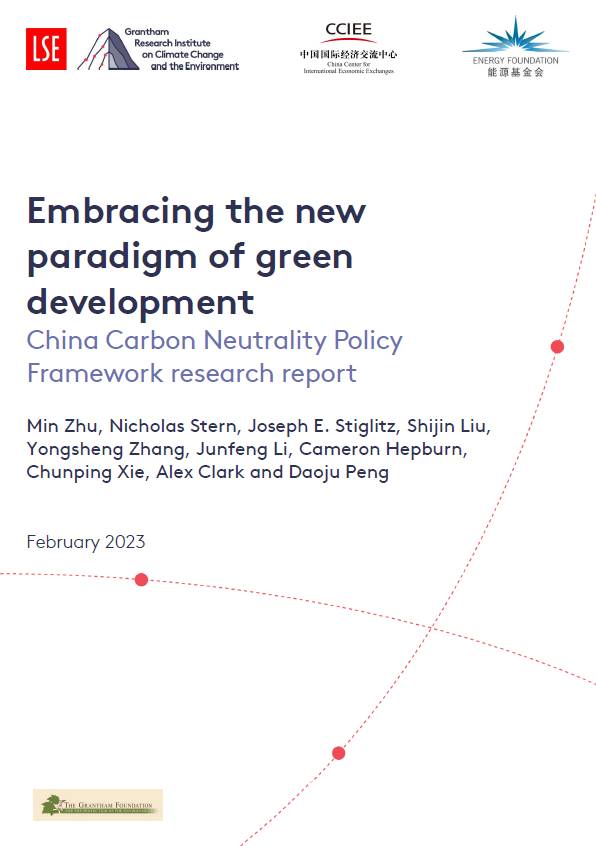
China’s commitment to become carbon neutral by 2060 signals its determination and ambition to switch away from fossil fuels but also to embrace a new model of modernisation that can benefit both China and the world and contribute to a green and prosperous future.
This report rethinks basic issues in economics in describing a new development strategy for China, focusing on theories of value, the definition and measurement of wellbeing and wealth, and analytical frameworks for individual and collective behaviour. It sets out the guiding principles for this new development model and defines the actions required to reshape key sectors in China. It also considers China’s role in leading and promoting global carbon neutrality governance mechanisms and opportunities for international collaboration to realise a mutually advantageous, sustainable future.
Key Messages
- China has sustained consistently high growth rate over the last four decades, with infrastructure investment- and export-driven growth at centre stage. However, this has been damaging to China and the extension of this development approach to other, less economically advanced countries is generating an acute crisis of unsustainable modernisation.
- It is now clear that the ‘pollute first, clean up later’ approach is no longer viable. If China can realise ‘harmony between humans and nature’ through a new approach to development, its experience will be a vital driver of a globally sustainable future.
- While carbon neutrality is a formidable challenge for all countries, China’s challenges are unique due to its continuing growth and industrialisation, heavy reliance on fossil fuels, and the need to decarbonise existing infrastructure. But China also possesses certain advantages, such as its government’s capacity to coordinate and manage a systematic change, its enormous domestic market, and advantages in zero-carbon technologies and production.
- Carbon neutrality presents China with a positive future story characterised by sustainable growth and economic development. The country has the potential to be the largest global driver of the transformation to a new form of growth, setting an example to developing countries.
- Guiding principles for China’s green transition include to design the national carbon neutrality strategy on the basis of a broader and deeper concept of growth. China should leverage the role of markets while also strengthening government’s role in guiding and planning the transition, and allow market principles – in particular carbon pricing – to play a leading role in resource allocation. It is also important to ensure a transition that is secure, well-coordinated and balanced.
- The report describes the priorities and challenges for China’s five largest economic sectors and makes recommendations for each. It examines how to reshape the energy landscape and shift away from coal; how to transform transport; the transition in manufacturing; urbanisation and carbon neutrality; and redefining the relationship between humanity and land use. Dynamics in these sectors interact closely with inter- and intra-regional development, as well as with the shaping of individual lifestyles.
- The transition requires China’s government to provide strong institutional, financial and technological support. This requires systemic transformations such as building a comprehensive carbon accounting system, building a macro-management framework for zero-carbon finance, promoting breakthroughs in critical carbon-neutral technologies, and building a management mechanism to ensure a balanced carbon-neutral transition.
- China should seize the opportunity to achieve carbon neutrality by stepping up cooperation with the rest of the world. It can, for example, promote global carbon neutrality mechanisms, participate in global net zero finance cooperation and competition, and support developing countries in the transition to carbon neutrality.
Read Full Report
